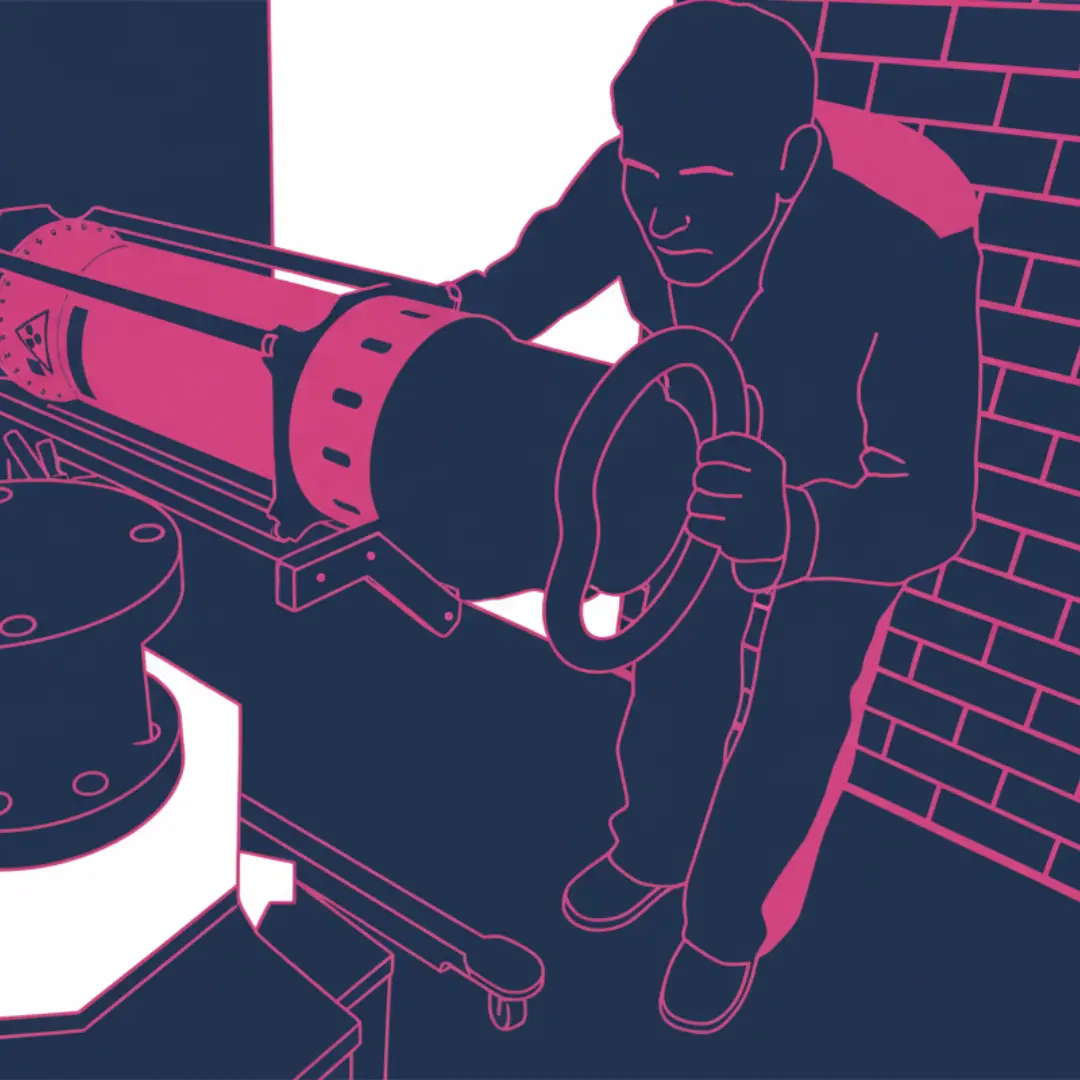Radiographic Testing (RT) Jobs & Career Guide
Welcome to the definitive career hub for Radiographic Testing professionals. Below you’ll find a live feed of the latest RT jobs, from trainee to Level III. Further down, explore salary data, certification requirements, and the complete career path for a future in industrial radiography.
Live Radiographic Testing Job Openings
What is Radiographic Testing?
Radiographic Testing (RT) is a powerful Non-Destructive Testing method that uses X-rays or gamma rays to see inside a component without destroying it. Think of it as a medical X-ray for industrial parts.
The process involves placing a radiation source on one side of the object and a detector (like a specialized film or a digital panel) on the other. As the radiation passes through the material, some of it is absorbed. Thicker, denser areas absorb more radiation, while thinner areas or internal flaws like cracks or porosity absorb less. This difference is captured on the detector, creating a shadowgraph image. A darker area on the film indicates more radiation passed through, often highlighting a potential defect.
A skilled RT technician can interpret these images to identify imperfections and ensure a component is fit for service, playing a critical role in safety and quality assurance.

Key Industries Relying on RT

Inspecting critical welds, turbine blades, and high-stress components

examining the integrity of pipeline welds

inspect high-pressure piping, boiler tubes, and containment vessels

Verifying the quality of hull welds and other critical structural components

Checking for internal defects like gas porosity, shrinkage, and inclusions
The Radiographic Testing (RT) Career Path & Certifications
01
RT Trainee / Assistant
This is the entry-level position. A trainee works under the direct supervision of certified radiographers. The primary focus is on safety and procedure. You’ll learn to handle equipment, set up radiation boundaries, perform source inventories, and observe the entire inspection process while accumulating the necessary on-the-job training (OJT) hours. Safety is the absolute priority at this stage.


02
RT Level I Technician
After completing formal training (typically 40 hours) and OJT, you can test for Level I certification. A Level I is qualified to perform specific RT tasks, like setting up equipment and exposing the film or detector, all under the supervision of a Level II or III. They can process films and perform system checks but are not yet qualified to interpret the results independently.
03
RT Level II Technician
This is the core professional role. A Level II has the extensive training and experience needed to not only perform the inspection but also to interpret the resulting radiographs, evaluate them against codes and standards, and accept or reject the part. They are responsible for the entire inspection process and are qualified to supervise and train Level I technicians and trainees.


04
RT Level III Technician
The highest level of certification. An RT Level III is the resident expert. They develop and approve RT procedures, interpret complex codes, and are qualified to train and examine Level I and II personnel. They often hold roles like NDT Supervisor, Responsible Level III, or Radiation Safety Officer (RSO), overseeing the entire radiography program for a company.
Radiographic Testing Salary Expectations
| Certification Level | Experience Level | Average Salary Range (USD) |
|---|---|---|
| NDT Trainee | 0-1 Year | $45,000 – $60,000 |
| RT Level I | 1-2 Years | $55,000 – $70,000 |
| RT Level II | 2-5+ Years | $70,000 – $105,000+ |
| RT Level III | 5-10+ Years | $95,000 – $150,000+ |
Disclaimer: Salaries can vary significantly based on location, industry (nuclear and aerospace often pay a premium), travel and hazard pay, and advanced certifications like CR/DR (Computed/Digital Radiography).
Level Up Your Career: Insights from Our NDT Blog
-
- October 6, 2025
- Career Growth
Cracking the Code: How to Specialize in Advanced...
In the world of Non-Destructive Testing (NDT), gaining your initial certifications is the ticket to a stable and rewarding career….
-
- October 6, 2025
- Career Growth
From NDT Technician to Supervisor: A 5-Year Career...
A career in Non-Destructive Testing (NDT) offers a direct path for growth, leading from a hands-on technician to a leadership…
-
- September 30, 2025
- Career Growth
Why Soft Skills Matter More Than You Think...
In the world of Non-Destructive Testing (NDT), technical expertise is king. Your certifications prove you can find flaws and interpret…
It generally takes 1.5 to 3 years. The path involves completing 40 hours of formal classroom training, followed by accumulating the required on-the-job experience. Per SNT-TC-1A guidelines, this is typically 210 hours for Level I and an additional 420 hours to be eligible for Level II, for a total of 630 hours.
Yes, for individuals who are meticulous, disciplined, and have a deep respect for safety procedures. The demand for certified radiographers is consistently high, and it offers excellent pay and job security. However, it requires a serious commitment to safety due to the handling of radiation sources.
Both methods are used to find internal flaws, but RT uses penetrating radiation (X-rays/gamma rays) while UT uses high-frequency sound waves. A key advantage of RT is that it produces a permanent visual record (the radiograph), which many codes require. UT is generally more portable and safer as it does not involve ionizing radiation.
IRRSP stands for Industrial Radiography Radiation Safety Personnel. It is a mandatory safety certification in the U.S. that proves an individual is qualified to handle radioactive materials safely. You cannot legally work as a radiographer without this or an equivalent state-issued certification.

